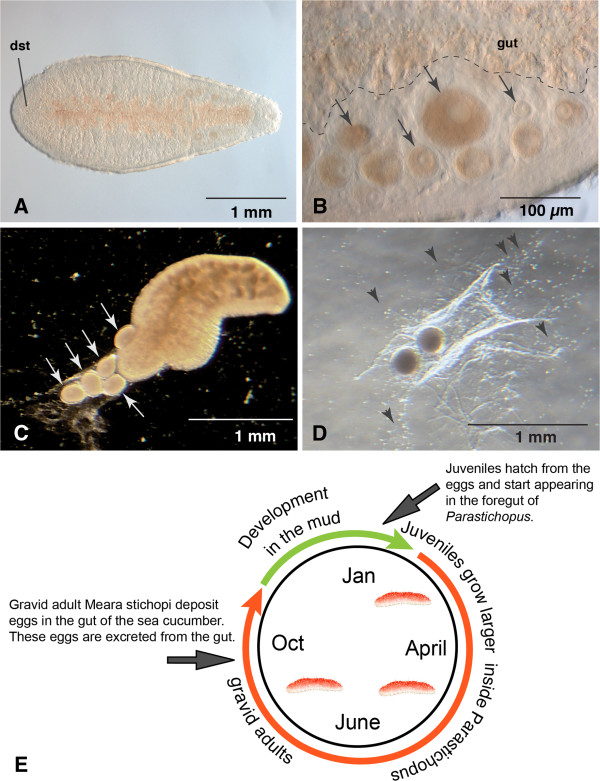ECB-IMG-180726
Echinobase Image ID: 180726

|
Figure 2. Egg deposition of gravid M. stichopi and model of annual life cycle. A) Gravid adult of Meara stichopi collected in September. The characteristic double statocyst (dst) at the anterior end is indicated. B) Close-up of oocytes in different stages of the adult (black arrows). Note that smaller oocytes are located more distally than the large oocytes. Anterior to the left, the gut is labeled with the dotted line. C) Five eggs (white arrows) deposited in a glass bowl by an adult M. stichopi oriented with the anterior end to the embryos. D) Two eggs in jelly deposited on the bottom of the glass bowl. Small dots surrounding the eggs are motile spermatozoa (arrowheads). E) Model for annual cycle of M. stichopi. According to the model, fertilized eggs exit the sea cucumber through the gut and develop between 9â12 weeks in the sediment. After hatching, the juveniles initially do not have a mouth opening and survive from the nutrients of the yolk. We presume the juveniles are ingested by the sea cucumbers, where they are able to adhere to the foregut of the sea cucumber, and live as commensals. The juveniles grow to adults over the next months and start to become gravid in August-October. Fertilization occurs in the foregut of the sea cucumber and eggs are deposited, probably exiting the gut of the sea cucumber through the anus. The adults disintegrate after egg deposition and are digested by the sea cucumber. The approximate variation of development covers a period of three months, which also includes the time window when gravid adults are observed to deposit eggs. Larger Image Printer Friendly View |
